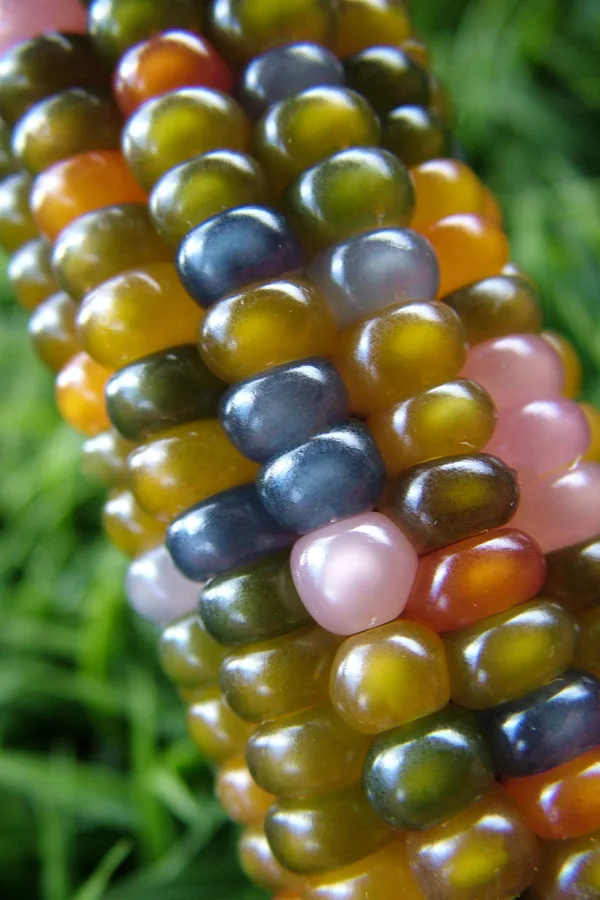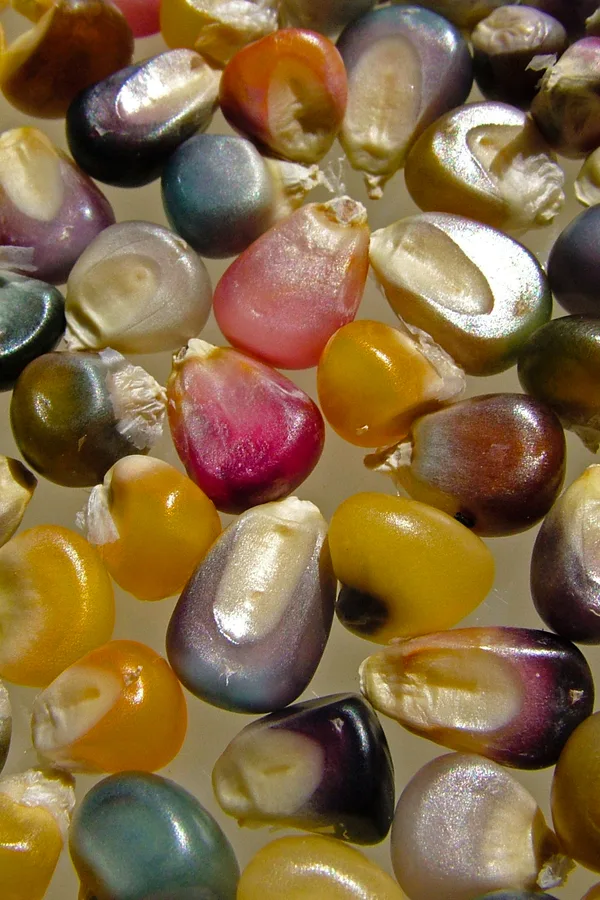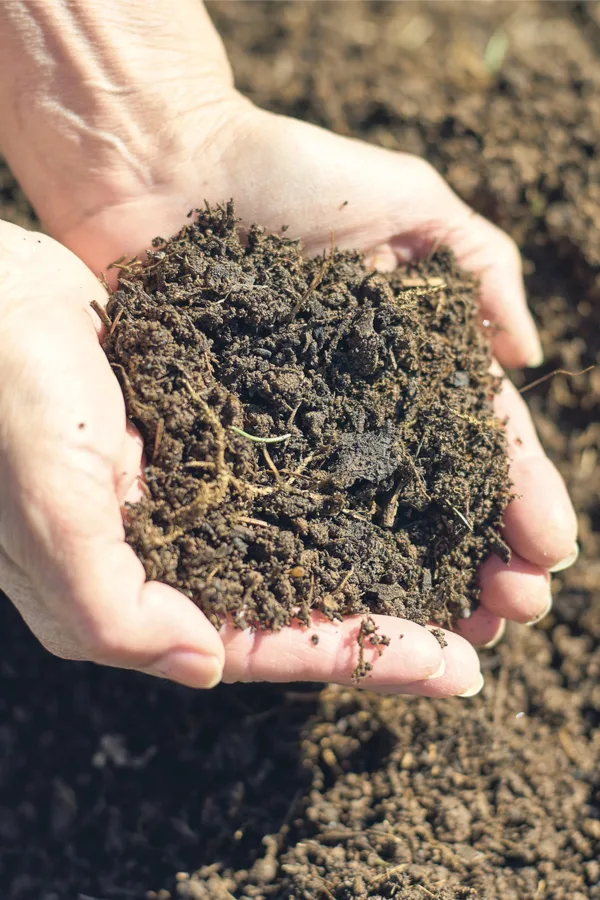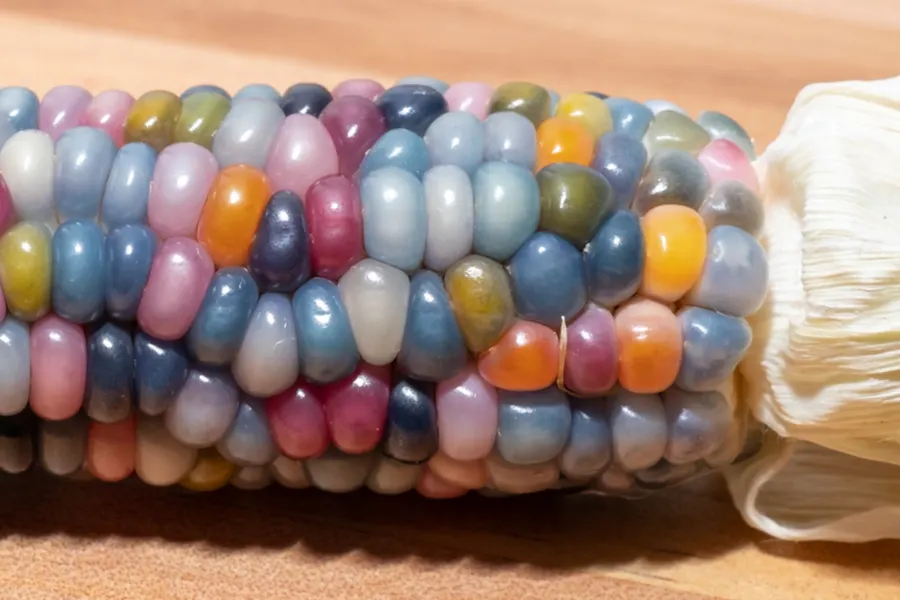If you are one of those gardeners always looking for something incredibly unique and interesting to plant and raise in your garden, look no further than growing glass gem corn!
Glass gem corn is catching the eye of gardeners everywhere – and with good reason! Not only does this one-of a kind corn have incredibly beautiful kernels that seem to dance with color, it also happens to be a wonderful multi-purpose vegetable crop.
Glass gem is in the flint family of corn crops, and can be consumed as a food source, or used to create stunning decorations. As a flint corn, it is perfect for grinding into corn flour. But it also happens to be a great corn for popping as well. Especially when you consider the “wow” factor of watching its glassy kernels pop before your very eyes!

But its glass-like, multi-colored kernels also make this corn one of the best of all fall corns for decorating. Whether bundled and hung as a door hanger, or used as part of a table centerpiece, its beauty is simply stunning.
So how easy is glass gem corn to grow? Actually, it grows with the same care as traditional sweet or popping corn. Here is a look at how to plant, maintain and harvest your own gorgeous crop of glass gem corn.
How To Grow Glass Gem Corn
Sourcing The Seed
The origins of this heirloom corn can be traced back to the work of Carl Barnes. A Cherokee descendant, Carl dedicated his life to saving, growing and developing varieties of heritage corns. Glass gem corn came out of that effort, and the seed and corn quickly became a hot commodity.
In fact, so much so, that glass gem seed can often be hard to find. It sells out early, so if you want to grow it, order early to ensure you have seed on hand. Product Link : Glass Gem Corn Seed
The real beauty of this heirloom corn is that it is an open-pollinated variety. That of course means that a few kernels (seeds) can be saved from each year’s harvest to plant and grow again.

Planting
Glass gem takes anywhere from 100 to 110 days to go from seed to harvest. Since harvesting is done after the kernels have dried, it can be left on the stalks even longer for drying.
Allowing the soil to warm to at least 60 to 65 degrees before planting will help speed germination. Allow the late spring sun to warm the soil and sow seeds after the threat of frost has passed. For best results, seed should be planted around 1.5 inches deep in rows.
Plant your crop in multiple rows or blocks of rows. Planting just one or two long rows makes it hard for the corn to use the wind to pollinate.
Instead, plant shorter row lengths that are at least 4 to 6 rows wide to form thicker “blocks” of corn. As the wind crosses the tops of these blocks, it has an easier time pollinating each of the stalks.
Amending The Soil
As with all corn crops, glass gem is a heavy feeder from the soil. Especially when it comes to nitrogen. With that in mind, it is important to build plenty of nutrients into the soil at planting time.

Start by amending the soil with compost. Compost is not only teeming with nutrients, it also helps to retain valuable moisture in the soil. Without adequate water, the kernels will have trouble developing to full size.
When planting, dig your rows to a depth of 2 inches, filling them back in with an inch or so of compost. Next, plant your seeds down 1/2″ into the compost layer. This gives you the desired planting depth of 1.5 inches, all while surrounding your seed with powerful compost.
Finish by covering your seed with soil. An inch or so of loose straw placed on top of the soil as a mulch will help to conserve valuable moisture in the soil. A light mulching also helps keep competing weeds and weed seeds from blowing in and taking hold.
Maintaining Your Crop – How To Grow Glass Gem Corn
In warm soil, glass gem corn seed will usually germinate in 7 to 10 days. If you are experiencing unusually dry or hot conditions, water the seed to help speed up the process. Once the corn is established, it will only need watering in conditions of extreme drought.

The most important factor of all for good growth is to keep competing weeds out. Weeds not only steal the nutrients corn needs from the soil, they also rob moisture away from the plants as well.
The best way to keep your rows weed-free is by applying a thick layer of mulch. Once the corn has sprouted through the soil, apply an additional 3 to 4 inches of loose straw to help keep weeds out and moisture in.
Fertilizing Your Crop – How To Grow Glass Gem Corn
Even starting with rich, nutrient-filled soil, glass gem corn can benefit greatly from additional fertilizing. The key is knowing when to apply it, and how often.
Just like sweet corn, (See : How To Fertilize Sweet Corn), there are 3 key times to apply fertilizer to glass gem corn. When first planting the seed, at four to six weeks of growth, and again at around ten weeks of growth.
By using compost in the planting hole, you supply an adequate supply of nutrients for the first application. But for the second and third application, either use an organic granular fertilizer, or a healthy dose of compost tea.
If using an organic fertilizer, use one that contains a high nitrogen base, but still contains fair amounts of phosphorous and potassium as well. With compost tea, water in with about 1/8th of a gallon per stalk for best results.

Harvesting – How To Grow Glass Gem Corn
Unlike sweet corn, you can leave glass gem corn on the stalks to mature and dry. In fact, the best method of all for drying the corn is simply leaving it dry in place. That is, if you don’t have to worry about intruders.
You will want to keep a watchful eye on your crop as it matures. Drying corn begins to become a favorite snack of raccoon, deer and other wildlife as it ages. If you see signs of damage, it is best to pick before losing most or all of your crop!
Once picked, your corn can be used for decorations immediately, or allowed to dry on the cob for later popping or grinding. If you are drying the corn as a food source, it is best to shuck the husk first. Husks can retain moisture and water, and removing them will speed up the drying process greatly.
When it comes to popping, allow glass gem corn to dry at least two months after picking for best results. This will get the moisture level down within the kernels for a better popping success rate. Here is to growing glass gem corn in your next garden – and experiencing something unique in your garden!
Follow Our Facebook Page For Great Gardening Tips And Advice! This Is My Garden Facebook Page
This Is My Garden is a garden website created by gardeners, for gardeners. Jim and Mary Competti have been writing gardening, DIY and recipe articles and books and speaking for over 15 years from their 46 acre Ohio farm. They publish three articles every week, 52 weeks a year. Sign up today to follow via email, or follow along!

